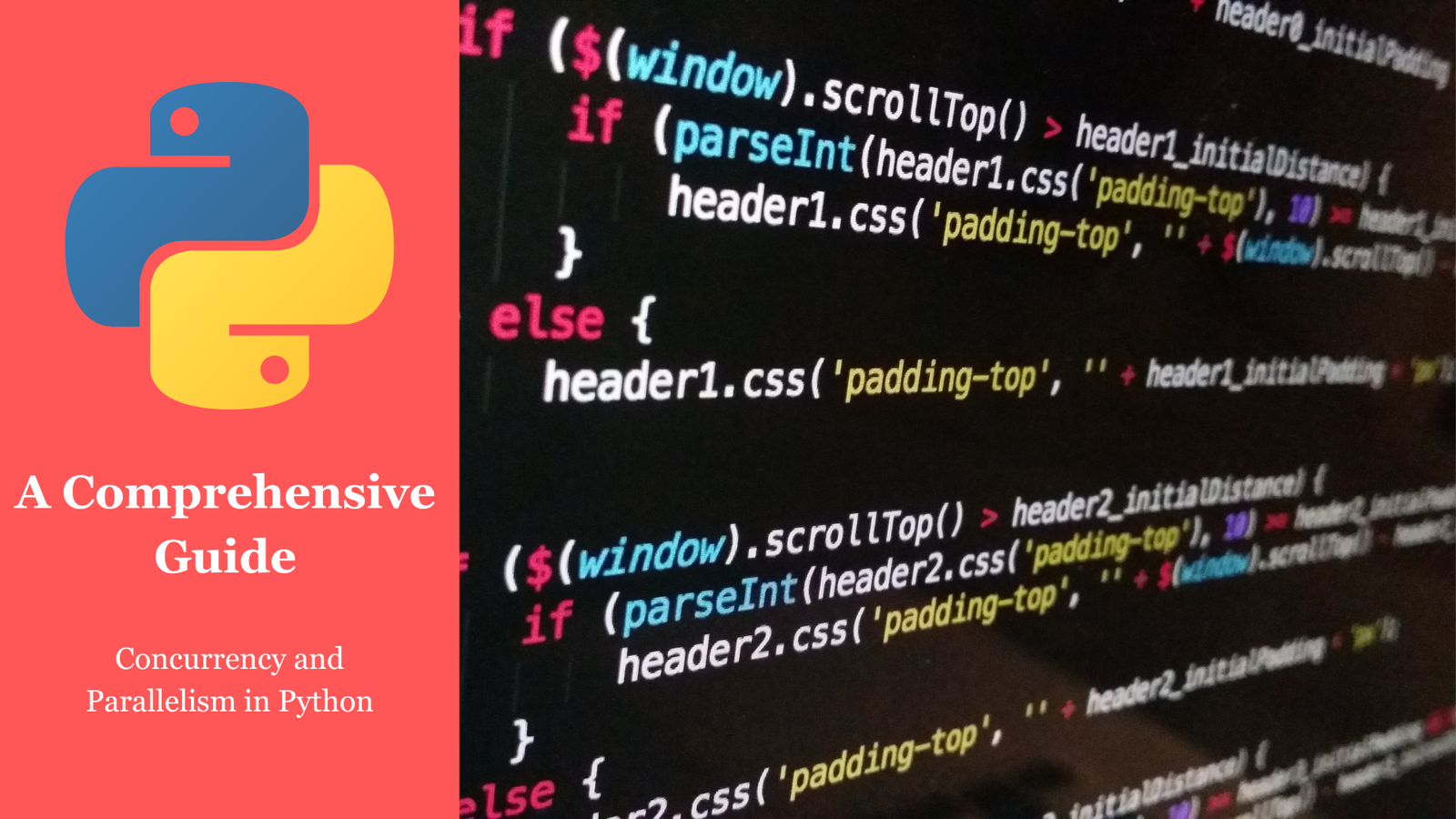Introduction
Modern applications demand efficient performance to handle multiple tasks simultaneously, making concurrency and parallelism essential concepts for developers. These techniques help optimize resource usage and improve application speed, particularly in tasks involving intensive computations or numerous input/output operations.
Python offers powerful tools like threading, multiprocessing, and asynchronous programming to achieve concurrency and parallelism. This guide explores their differences, use cases, and implementations, providing hands-on examples to help you master these crucial concepts.
What are Concurrency and Parallelism?
1. Concurrency:
Concurrency refers to managing multiple tasks at the same time by interleaving their execution. It’s about efficient task management rather than simultaneous execution.
Example: A web server handling multiple user requests by switching between them.
2. Parallelism:
Parallelism involves executing multiple tasks simultaneously using multiple processors or cores.
Example: Performing image processing on multiple cores in parallel.
Concurrency vs. Parallelism
| Feature | Concurrency | Execution |
| Execution | Tasks are managed simultaneously. | Tasks are executed simultaneously. |
| Use Case | I/O-bound operations. | CPU-bound operations. |
| Python Example | Threading, asyncio. | Multiprocessing. |
Python Libraries for Concurrency and Parallelism
1. Threading:
Threading allows concurrent execution of tasks within a single process. It is ideal for I/O-bound tasks like reading files or fetching data over a network.
2. Multiprocessing:
Multiprocessing creates separate processes, each with its own memory space, leveraging multiple CPU cores. It’s suited for CPU-bound tasks like computations or simulations.
3. Asyncio:
Asyncio provides asynchronous programming capabilities, enabling efficient management of I/O-bound tasks such as multiple API calls or socket programming.
Setting Up Your Environment
1. Install Python: Ensure Python 3.7+ is installed.
2. Use a Preferred IDE: Jupyter Notebook, VS Code, or PyCharm are ideal for testing and development.
Threading in Python
Threading is effective for tasks involving I/O operations since threads share memory space and communicate efficiently.
Example: Fetching Data Using Threads
import threading
import time
def fetch_data(task_id):
print(f"Task {task_id} started.")
time.sleep(2) # Simulate I/O delay
print(f"Task {task_id} completed.")
threads = []
for i in range(5):
thread = threading.Thread(target=fetch_data, args=(i,))
threads.append(thread)
thread.start()
for thread in threads:
thread.join()Multiprocessing in Python
Multiprocessing is preferred for CPU-bound tasks because each process runs in its own memory space.
Example: Parallel Processing
from multiprocessing import Process
def process_task(task_id):
print(f"Process {task_id} started.")
print(f"Process {task_id} completed.")
processes = []
for i in range(5):
process = Process(target=process_task, args=(i,))
processes.append(process)
process.start()
for process in processes:
process.join()Asynchronous Programming with Asyncio
Asyncio is an event-driven framework suitable for I/O-bound tasks that don’t require blocking operations.
Example: Asynchronous HTTP Requests
import asyncio
async def fetch_data(task_id):
print(f"Task {task_id} started.")
await asyncio.sleep(2) # Simulate async I/O
print(f"Task {task_id} completed.")
async def main():
tasks = [fetch_data(i) for i in range(5)]
await asyncio.gather(*tasks)
asyncio.run(main())When to Use Each Approach
| Task Type | Recommended Approach |
| I/O-bound tasks | Threading or Asyncio |
| CPU-bound tasks | Multiprocessing |
| Real-time tasks | Asyncio |
Best Practices for Concurrency and Parallelism
1. Choose the Right Tool:
• Use threading or asyncio for I/O-bound tasks.
• Use multiprocessing for CPU-intensive operations.
2. Avoid Race Conditions:
Protect shared resources using locks:
from threading import Lock
lock = Lock()
with lock:
# Perform thread-safe operations3. Limit Resources:
Set limits on threads or processes based on your system’s capabilities to prevent overloading.
4. Profile Your Code:
Use tools like cProfile to identify performance bottlenecks.
5. Debugging:
Use logging and thread-safe methods for debugging concurrent or parallel applications.
FAQs
1. What is concurrency?
Concurrency is the management of multiple tasks by interleaving their execution.
2. When should I use threading in Python?
Use threading for I/O-bound tasks like reading files or making network requests.
3. What is multiprocessing best suited for?
Multiprocessing is ideal for CPU-bound tasks that require intensive computations.
4. What is asyncio in Python?
Asyncio is a framework for asynchronous programming, ideal for non-blocking I/O tasks.
5. How does the Global Interpreter Lock (GIL) affect threading?
The GIL prevents multiple native threads from executing Python bytecode simultaneously, limiting threading’s performance for CPU-bound tasks.
6. Can threading and multiprocessing be combined?
Yes, you can combine threading and multiprocessing for complex workflows.
7. What is a race condition?
A race condition occurs when multiple threads access shared resources without proper synchronization.
8. Which library is better for real-time applications?
Asyncio is better for real-time applications like chat systems or WebSocket handling.
9. How do I handle shared data in multiprocessing?
Use multiprocessing.Manager or shared memory objects.
10. What’s the difference between concurrency and parallelism?
Concurrency is task management, while parallelism is simultaneous execution on multiple cores.
Conclusion
Concurrency and parallelism are powerful techniques to optimize Python programs for various use cases. By choosing the right approach—threading, multiprocessing, or asyncio—you can handle tasks more efficiently, whether they’re I/O-bound or CPU-intensive. With Python’s robust libraries and a clear understanding of these concepts, you can build high-performance applications tailored to modern needs.

